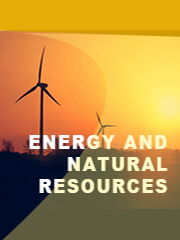Report overview
Lead Carbon Battery is the Ultra Battery, which is a hybrid device that combines ultra-capacitor technology with lead-acid battery technology in a single cell with a common electrolyte.
Lead Carbon battery add carbon material with high capacitance or highly conductive into the negative electrode, combine the advantages of lead acid battery and super capacitors, Lead carbon battery provide not only high energy density, but also high power, rapid charge and discharge, longer cycle life.
This report aims to provide a comprehensive presentation of the global market for Lead Carbon Battery, with both quantitative and qualitative analysis, to help readers develop business/growth strategies, assess the market competitive situation, analyze their position in the current marketplace, and make informed business decisions regarding Lead Carbon Battery. This report contains market size and forecasts of Lead Carbon Battery in global, including the following market information:
Global Lead Carbon Battery Market Revenue, 2018-2023, 2024-2029, ($ millions)
Global Lead Carbon Battery Market Sales, 2018-2023, 2024-2029, (GWh)
Global top five Lead Carbon Battery companies in 2022 (%)
The global Lead Carbon Battery market was valued at US$ 866.1 million in 2022 and is projected to reach US$ 2361.5 million by 2029, at a CAGR of 15.4% during the forecast period. The influence of COVID-19 and the Russia-Ukraine War were considered while estimating market sizes.
Currently, there are many producing companies in the world. The main market players are ShuangDeng, China Tianneng, Furukawa, Eastpenn, Sacred Sun, Narada, XiongZhuang, Huafu Energy Storage and Axion, etc, with about 78% market shares.
China is the largest production of Lead Carbon Battery, with a production value market share nearly 70%. The second place is North America; following China with the production value market share over 13%. Asia (Ex.China) is another important production market of Lead Carbon Battery.
We surveyed the Lead Carbon Battery manufacturers, suppliers, distributors and industry experts on this industry, involving the sales, revenue, demand, price change, product type, recent development and plan, industry trends, drivers, challenges, obstacles, and potential risks.
Total Market by Segment:
Global Lead Carbon Battery Market, by Type, 2018-2023, 2024-2029 ($ Millions) & (GWh)
Global Lead Carbon Battery Market Segment Percentages, by Type, 2022 (%)
Below 200 Ah
Between 200 and 800 Ah
Above 800 Ah
Global Lead Carbon Battery Market, by Application, 2018-2023, 2024-2029 ($ Millions) & (GWh)
Global Lead Carbon Battery Market Segment Percentages, by Application, 2022 (%)
Hybrid Electric Vehicles
Energy Storage Systems
Communication System
Smart Grid and Micro-grid
Others
Global Lead Carbon Battery Market, By Region and Country, 2018-2023, 2024-2029 ($ Millions) & (GWh)
Global Lead Carbon Battery Market Segment Percentages, By Region and Country, 2022 (%)
North America
US
Canada
Mexico
Europe
Germany
France
U.K.
Italy
Russia
Nordic Countries
Benelux
Rest of Europe
Asia
China
Japan
South Korea
Southeast Asia
India
Rest of Asia
South America
Brazil
Argentina
Rest of South America
Middle East & Africa
Turkey
Israel
Saudi Arabia
UAE
Rest of Middle East & Africa
Competitor Analysis
The report also provides analysis of leading market participants including:
Key companies Lead Carbon Battery revenues in global market, 2018-2023 (Estimated), ($ millions)
Key companies Lead Carbon Battery revenues share in global market, 2022 (%)
Key companies Lead Carbon Battery sales in global market, 2018-2023 (Estimated), (GWh)
Key companies Lead Carbon Battery sales share in global market, 2022 (%)
Further, the report presents profiles of competitors in the market, key players include:
ShuangDeng
China Tianneng
Furukawa
Eastpenn
Sacred Sun
Narada
XiongZhuang
Huafu Energy Storage
Axion
Outline of Major Chapters:
Chapter 1: Introduces the definition of Lead Carbon Battery, market overview.
Chapter 2: Global Lead Carbon Battery market size in revenue and volume.
Chapter 3: Detailed analysis of Lead Carbon Battery manufacturers competitive landscape, price, sales and revenue market share, latest development plan, merger, and acquisition information, etc.
Chapter 4: Provides the analysis of various market segments by type, covering the market size and development potential of each market segment, to help readers find the blue ocean market in different market segments.
Chapter 5: Provides the analysis of various market segments by application, covering the market size and development potential of each market segment, to help readers find the blue ocean market in different downstream markets.
Chapter 6: Sales of Lead Carbon Battery in regional level and country level. It provides a quantitative analysis of the market size and development potential of each region and its main countries and introduces the market development, future development prospects, market space of each country in the world.
Chapter 7: Provides profiles of key players, introducing the basic situation of the main companies in the market in detail, including product sales, revenue, price, gross margin, product introduction, recent development, etc.
Chapter 8: Global Lead Carbon Battery capacity by region & country.
Chapter 9: Introduces the market dynamics, latest developments of the market, the driving factors and restrictive factors of the market, the challenges and risks faced by manufacturers in the industry, and the analysis of relevant policies in the industry.
Chapter 10: Analysis of industrial chain, including the upstream and downstream of the industry.
Chapter 11: The main points and conclusions of the report.
